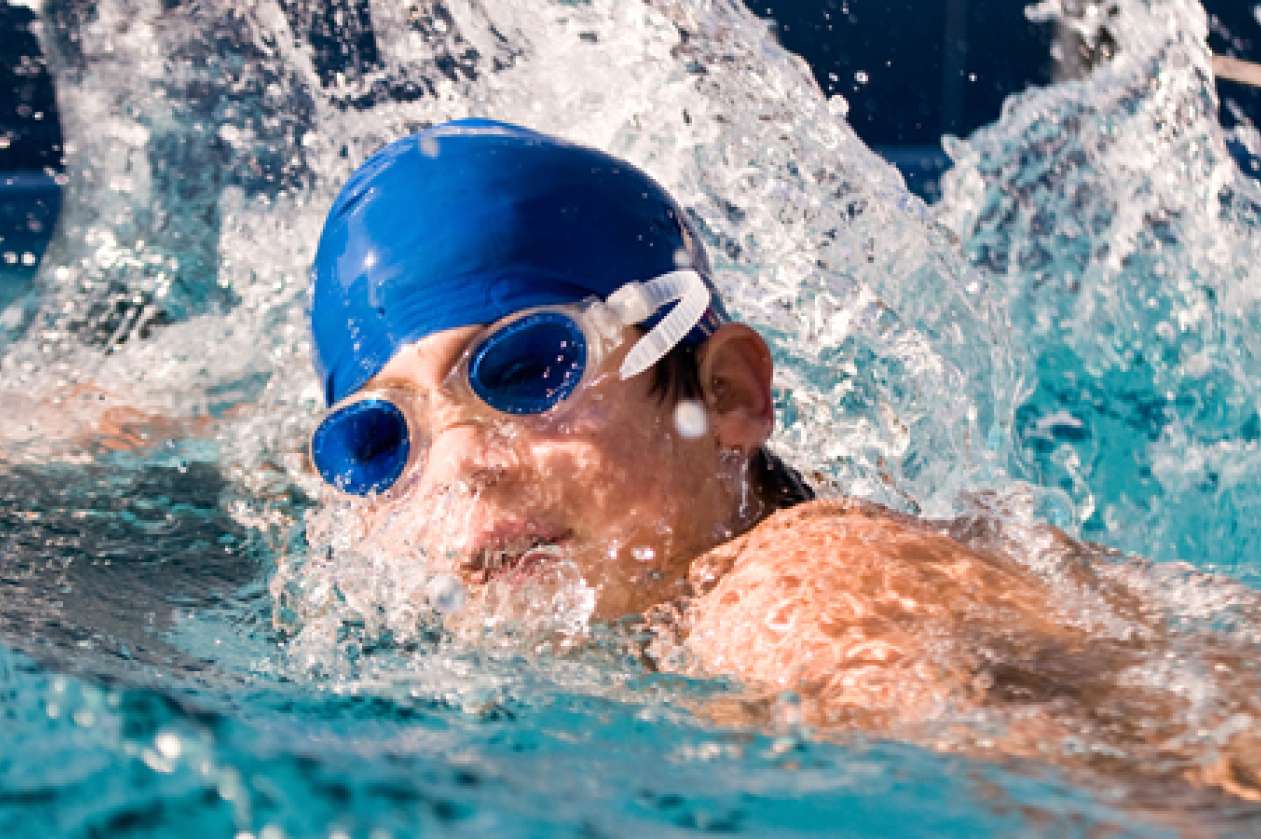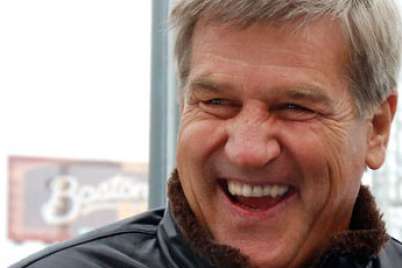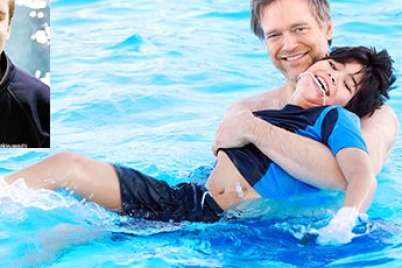
What you need to know for your kids’ first triathlon
Most kids love running, biking, and swimming, which might explain the growing popularity of mini-triathlons for kids. (Some events claim to be designed for very young children, but kids shouldn’t be competing in triathlons until they are about 9 or 10.)
If you have never done a triathlon yourself, it is hard to know what to pack, what to wear, and what to practice. It seems simple enough. Run, bike, swim … or is it bike, swim, run?
It also may sound more intimidating than it really is. The best triathlons for kids keep distances age-appropriate and focus on completion over competition. When selecting a triathlon for your child, look for one that makes it clear that the focus is fun.
Remember to review the specific instructions on the triathlon’s website so that you and your child feel prepared. The more you know ahead of time the more fun everyone will have.
The orientation
Some triathlons offer an orientation, which will give you and your kids a chance to review the race course for the different age levels, find out what you need to bring, where the bikes are kept, see the entry and exit points of the transition areas, discover where adults can watch, and lets you plan your route for the best photo ops. Check for orientation times offered ahead of race day.
The transition area
The transition area is where bikes are kept on racks that are organized by age group to minimize confusion and lost bikes.
- On race day, find your age group and pick a spot on the racks that is easy for your child to locate when running in from the pool area.
- The transition area is also where they leave all of their gear: towel, running shoes, socks, t-shirt, race bib/belt, water bottle, and hat. Kids can bring goggles with them for the swim.
- Tip: Spend a moment to familiarize your child with the entry and exit gates. Review where the bike is to be left after the ride; there may be a second transition area, and again, look for the entry and exit points so your child knows what to expect and where they are supposed to go next.
The swim
If your child is new to triathlons, look for one where kids swim in an indoor or outdoor pool rather than a lake. Swimming in lanes is much easier than swimming in open water, as well as less intimidating, and they are mostly temperature controlled.
- Find out the distance your child’s age group needs to complete and practice a couple of times in a local pool.
- Kids can wear goggles and use a floatation device if necessary.
- All kids will start in the water, hanging on to the pool edge, their swim will end in the shallow end and they will be guided along a path to their bike where volunteers will be on hand to help them.
- Tip: It is important the kids know how many lengths they need to do on triathlon day so they don’t get confused and do too many or too few.
The bike
Helmets mandatory and fun required!
- Adults can sometimes help with the transition from pool to bike and even run alongside kids on the bike if they’re up for it.
- Bring a towel to dry off, and then put on the t-shirt/race bib before the helmet (you’d be surprised at how many forget to do this).
- Have the race bib already pinned on the t-shirt. Shorts are not necessary (your child will still be wearing their bathing suit).
- Tie shoes properly or get kids some “clips” like these ones for young kids or these for older ones that allow for fast shoe putting on. Volunteers will be there to help get kids dressed but everyone is trying to go fast so it can get clumsy.
- Tip: Kids are not used to putting socks and shoes on wet feet or riding a bike while dripping wet. It’s a good idea to practice running out of a pool, sitting on towel, putting on t-shirt, socks, shoes, helmet, and riding around the block while still wet.
- Helmets must be done up before touching the bike. Safety first!
- Kids will walk their bikes from where they change to the designated spot marked for getting on their bikes.
- There will be a clearly marked area at the end of the bike course where they must dismount their bike.
- Tip: Most bike distances will include a number of laps around the same loop. Cyclists and their family members are usually responsible for counting their own laps so come with numbered signs or get close to the bike loop so your child can hear you and help them keep track.
- If their chain falls off or a tire goes flat on the course, do not panic. Volunteers are riding the bike loop and will be by shortly to assist them and get them back in the fun.
- Practice the distance with your kids and check the bike ahead of time to ensure their seat is the right height, tires are inflated, chain is in good working order, and that they can manage the brakes.
The run
You will never see bigger smiles than when your child rounds the curve leaving the transition area to head out for the run. They know the finish line is in sight.
- If it’s a super-hot day, a hat is a good idea, and it’s important to encourage them to stop at the water stations provided.
- Kids should know how far they are running and follow the appropriate signs and volunteers that are there to point them in the right direction. If laps need to be done, help your runner by counting laps for them.
- Tip: A few practice runs and some training in how to run before the event are great ways to help kids feel confident and to know what to expect on race day.
Once they leave transition for the run, grab your camera and get yourself to the finish so you can cheer them on and snap photos of them smiling as they cross the line.
Editor’s note: An earlier version of this story suggested that training wheels were allowed in kids’ triathlons. Of course, kids aged 9 and older participating in triathlons would not likely require training wheels.






My 11-year old is competing in her first Tri this summer, and is a year round competitive swimmer, so we think she will love it! Is it necessary for a child to have a triathlon suit or do you think a suit with shorts over top for the bike and run are fine?
Assuming that she’s competing in a triathlon distance that is appropriate for an 11-year-old, shorts over a swim suit will be fine, Angie.
Nice article Deb, and very good response Jim. There are very nicely set up programs called ‘kids of steel’ that introduce very young children to the sport of triathalon….however, as soon as you hit the age limit you are with the big kids (age appropriate groupings and distances). Many parents pull their kids at this point in time for the simple reason that a) some six years olds have only finished Red Cross ‘animal levels and cannot swim the entire length of the pool unassisted, b) many are still using training wheels, and c) the routes involve (in some cases) road running and cycling…at an age when the children are not yet able to ride around he block by themselves let alone run or bike on the road. Some children are ready for the competition….. Ps. Loved your sentence…”You will never see bigger smiles…” You made me tear up! Too often triathalon has more to do with a parents ego than the child’s readiness….just personal opinion. Keep the kids of steel competition going, promote ‘completion’ as a goal…and keep it fun for the children.
I’m quite confused why you feel this sport is for kids aged 9 up – my son first completed at 5 and my daughter at 3 and both had a huge amount of fun – I think its a lot about the organizers and how the event is run but a kid friendly event, run by organizers who strongly believe in complete not compete and its definitely appropriate for younger kids. Fast forward a couple of years and my 7 year old has completed 6 tri’s and my nearly 5 year old has done 4 and they both would love to do more – we are just limited by the number available locally for their ages with plans to travel further afield next season to find more events – both enjoy the immensely and look forward to the next – actually I think by starting young it’s easier for them and less intimidating as the distances are very short for the little ones, meaning really every kid can complete, and having a parent or buddy alongside helps teach them how to move through the course and transition, when they are 9 plus they will be expected to handle transition and the course alone. Also you state that floatation devices and training wheels are ok and that is very event specific- many of our local events do not allow floatation devices, they may offer a kick board if kids are struggling (and they are for kids from Kindie age!) nor do they allow training wheels for older kids (certainly not at age 9!)
Hi Helen,
RE: recommendation for ages 9 and up – you essentially addressed our concerns at AfL.
We feel that triathlon is competitive by the very nature of its structure. If you have found events that emphasize completion over competition (i.e. winning or beating an opponent), then that is great to hear.
Given that the structure of triathlon, by its very format, emphasizes winners and losers, we are not confident that all parents and all event organizers can be relied upon to emphasize completion over competition in these circumstances, hence we are not confident recommending triathlon at those young ages.
If completion is the important consideration for preschoolers and early elementary age, we recommend that parents simply create a family event with their child and have fun as a family.
This will also afford opportunities to coach young ones through the transitions so they are not “left behind” at later ages in terms of competitive advantage.